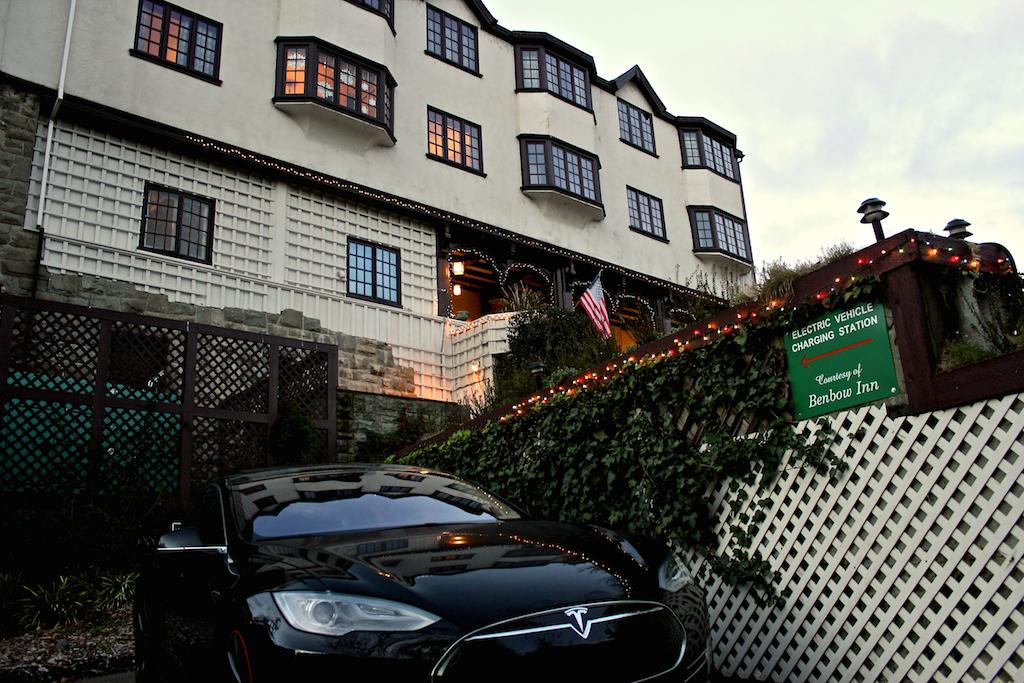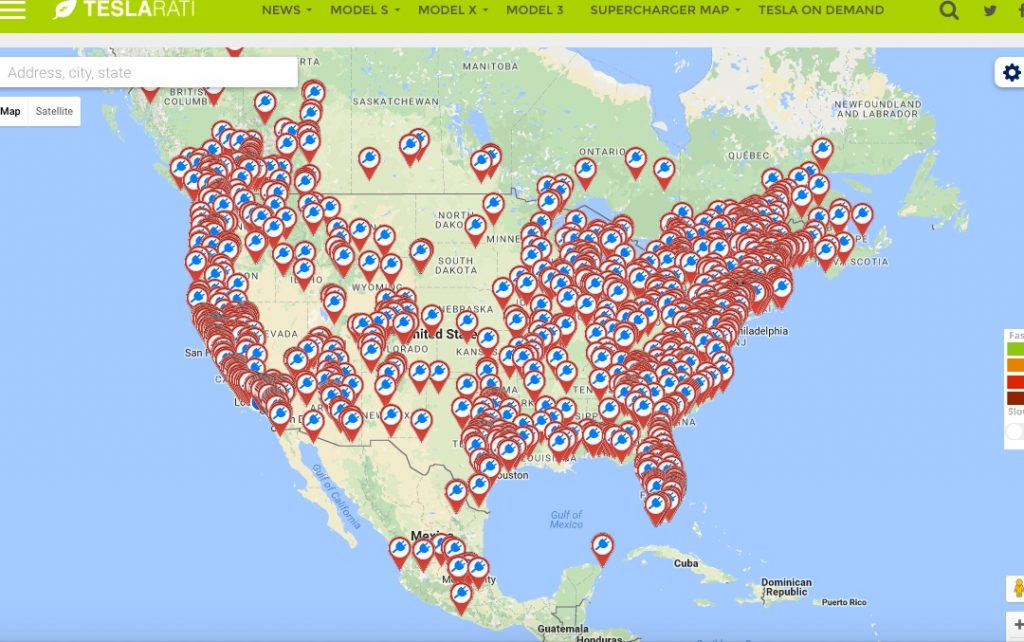Investor's Corner
No universal charging standards, Tesla wins

After writing about industrial networking and device standardization in the manufacturing automation space for ten years, I feel quite confident in saying any universal agreement on charging standards are far, far away.
Why, you say? In the manufacturing world, devices and systems need to communicate control signals via fieldbus and ethernet networks in order to monitor many types of applications. Multiple networks standards have been present for twenty plus years, with big automation suppliers — Siemens and Honeywell— in different networking camps, and there’s no universal agreement on one single network.
Sound familiar? CHAdeMO, Tesla Supercharger network and, of course, SAE Combo – these connecting standard are all driven by separate groups of companies. Some companies, such as GM, have no interest in building out a charging network, while German car companies now know the need for a charging platform to sustain a long game strategy.
With so many late entrants into the electric car market, the clear winner for these so-called charging wars is Tesla — not a believer that there is.
Why? The company’s superior Supercharging rates and deployment strategy, including destination charging, will pay dividends for years. For example, a recent Kickstarter campaign started by Quick Charge Power LLC is trying to develop an adapter that allows any battery electric vehicle from North American or Japan to use Tesla’s HPWC. According to the page, the adapter “will only work with Tesla AC charging equipment: the UMC mobile connector or the HPWC (wall connector) and destination chargers”.

With so many destination charging spots, a JDapter could make Bolts and next-gen Leafs a reality for High-Power Wall Chargers.
The company calls it the JDapter, and the big get could be Tesla’s Destination Charging system. In two years from now, a Bolt may have a reservation for a charge session at a hotel ahead of a Tesla owner.
A recent Facebook discussion raised this issue:
“The sites — destination charging — where Tesla installed the HPWCs are the ones who pay for the power; it seems reasonable that they should decide who should charge there. Tesla is even willing to include a J1772 charger with every pair of HPWCs and pay for that installation too.”
Quick Charge Power states that each establishment can create its own policy and has the right to exclude non-Tesla automobiles. And, of course, the adapters can’t work on the Supercharger network.
As enthusiasts and owners, how do we view this development? I feel it’s a win-win for the Tesla brand and to Musk’s ultimate goal of mass electrification.
Tesla is supremely positioned as the most coveted technology and charging platform out there. This is a Silicon Valley company and Musk knows the importance of being THE electric vehicle platform…think Google. As mainstream consumers become aware of Tesla’s direct relationship with its Superchargers, a Bolt and Model 3 charging line issue at a hotel should be minimal. Most will choose Tesla for their first foray into electric cars, purely on a charging criteria.
Plus, non-Tesla charge stations plans are in the works. Recently, Volkswagen, BMW and ChargePoint announced plans to expand DC, fast-charging networks on the coasts.
Also, the Volkswagen diesel rigging scandal is costing them greatly. A portion of the $15 billion settlement goes to promote zero-emission vehicles. The settlement payout, back in the summer, was to be $2 billion and it could go hydrogen filling stations and electric-car charging stations in states like California.
This is good news for Tesla as more stations appear as a result of the company’s adapters. Earlier this year, Tesla applied for a new patent on a CHadeMO and SAE J1772 adapter earlier this year. In the near future, a Tesla owner could be traveling anywhere, not just on the Supercharger network.
The standardization movement is noble but will be bloody for years. Musk and Tesla knew this when it struck out on its electrification strategy and, for now, all roads lead back to Tesla.

Investor's Corner
Tesla stock closes at all-time high on heels of Robotaxi progress

Tesla stock (NASDAQ: TSLA) closed at an all-time high on Tuesday, jumping over 3 percent during the day and finishing at $489.88.
The price beats the previous record close, which was $479.86.
Shares have had a crazy year, dipping more than 40 percent from the start of the year. The stock then started to recover once again around late April, when its price started to climb back up from the low $200 level.
This week, Tesla started to climb toward its highest levels ever, as it was revealed on Sunday that the company was testing driverless Robotaxis in Austin. The spike in value pushed the company’s valuation to $1.63 trillion.
Tesla Robotaxi goes driverless as Musk confirms Safety Monitor removal testing
It is the seventh-most valuable company on the market currently, trailing Nvidia, Apple, Alphabet (Google), Microsoft, Amazon, and Meta.
Shares closed up $14.57 today, up over 3 percent.
The stock has gone through a lot this year, as previously mentioned. Shares tumbled in Q1 due to CEO Elon Musk’s involvement with the Department of Government Efficiency (DOGE), which pulled his attention away from his companies and left a major overhang on their valuations.
However, things started to rebound halfway through the year, and as the government started to phase out the $7,500 tax credit, demand spiked as consumers tried to take advantage of it.
Q3 deliveries were the highest in company history, and Tesla responded to the loss of the tax credit with the launch of the Model 3 and Model Y Standard.
Additionally, analysts have announced high expectations this week for the company on Wall Street as Robotaxi continues to be the focus. With autonomy within Tesla’s sights, things are moving in the direction of Robotaxi being a major catalyst for growth on the Street in the coming year.
Elon Musk
Tesla needs to come through on this one Robotaxi metric, analyst says
“We think the key focus from here will be how fast Tesla can scale driverless operations (including if Tesla’s approach to software/hardware allows it to scale significantly faster than competitors, as the company has argued), and on profitability.”

Tesla needs to come through on this one Robotaxi metric, Mark Delaney of Goldman Sachs says.
Tesla is in the process of rolling out its Robotaxi platform to areas outside of Austin and the California Bay Area. It has plans to launch in five additional cities, including Houston, Dallas, Miami, Las Vegas, and Phoenix.
However, the company’s expansion is not what the focus needs to be, according to Delaney. It’s the speed of deployment.
The analyst said:
“We think the key focus from here will be how fast Tesla can scale driverless operations (including if Tesla’s approach to software/hardware allows it to scale significantly faster than competitors, as the company has argued), and on profitability.”
Profitability will come as the Robotaxi fleet expands. Making that money will be dependent on when Tesla can initiate rides in more areas, giving more customers access to the program.
There are some additional things that the company needs to make happen ahead of the major Robotaxi expansion, one of those things is launching driverless rides in Austin, the first city in which it launched the program.
This week, Tesla started testing driverless Robotaxi rides in Austin, as two different Model Y units were spotted with no occupants, a huge step in the company’s plans for the ride-sharing platform.
Tesla Robotaxi goes driverless as Musk confirms Safety Monitor removal testing
CEO Elon Musk has been hoping to remove Safety Monitors from Robotaxis in Austin for several months, first mentioning the plan to have them out by the end of 2025 in September. He confirmed on Sunday that Tesla had officially removed vehicle occupants and started testing truly unsupervised rides.
Although Safety Monitors in Austin have been sitting in the passenger’s seat, they have still had the ability to override things in case of an emergency. After all, the ultimate goal was safety and avoiding any accidents or injuries.
Goldman Sachs reiterated its ‘Neutral’ rating and its $400 price target. Delaney said, “Tesla is making progress with its autonomous technology,” and recent developments make it evident that this is true.
Investor's Corner
Tesla gets bold Robotaxi prediction from Wall Street firm
Last week, Andrew Percoco took over Tesla analysis for Morgan Stanley from Adam Jonas, who covered the stock for years. Percoco seems to be less optimistic and bullish on Tesla shares, while still being fair and balanced in his analysis.

Tesla (NASDAQ: TSLA) received a bold Robotaxi prediction from Morgan Stanley, which anticipates a dramatic increase in the size of the company’s autonomous ride-hailing suite in the coming years.
Last week, Andrew Percoco took over Tesla analysis for Morgan Stanley from Adam Jonas, who covered the stock for years. Percoco seems to be less optimistic and bullish on Tesla shares, while still being fair and balanced in his analysis.
Percoco dug into the Robotaxi fleet and its expansion in the coming years in his latest note, released on Tuesday. The firm expects Tesla to increase the Robotaxi fleet size to 1,000 vehicles in 2026. However, that’s small-scale compared to what they expect from Tesla in a decade.
Tesla expands Robotaxi app access once again, this time on a global scale
By 2035, Morgan Stanley believes there will be one million Robotaxis on the road across multiple cities, a major jump and a considerable fleet size. We assume this means the fleet of vehicles Tesla will operate internally, and not including passenger-owned vehicles that could be added through software updates.
He also listed three specific catalysts that investors should pay attention to, as these will represent the company being on track to achieve its Robotaxi dreams:
- Opening Robotaxi to the public without a Safety Monitor. Timing is unclear, but it appears that Tesla is getting closer by the day.
- Improvement in safety metrics without the Safety Monitor. Tesla’s ability to improve its safety metrics as it scales miles driven without the Safety Monitor is imperative as it looks to scale in new states and cities in 2026.
- Cybercab start of production, targeted for April 2026. Tesla’s Cybercab is a purpose-built vehicle (no steering wheel or pedals, only two seats) that is expected to be produced through its state-of-the-art unboxed manufacturing process, offering further cost reductions and thus accelerating adoption over time.
Robotaxi stands to be one of Tesla’s most significant revenue contributors, especially as the company plans to continue expanding its ride-hailing service across the world in the coming years.
Its current deployment strategy is controlled and conservative to avoid any drastic and potentially program-ruining incidents.
So far, the program, which is active in Austin and the California Bay Area, has been widely successful.








